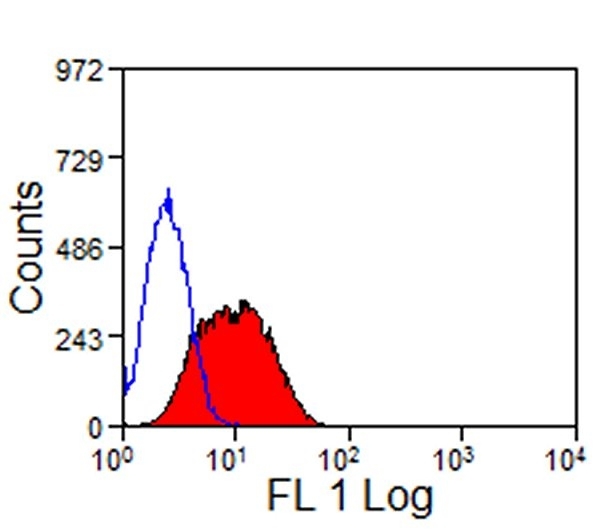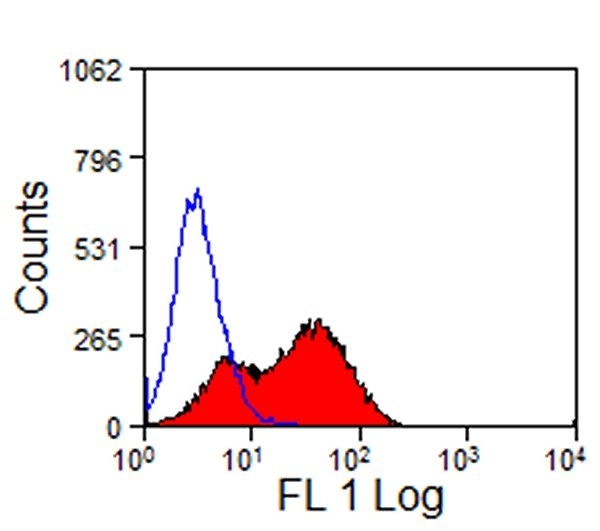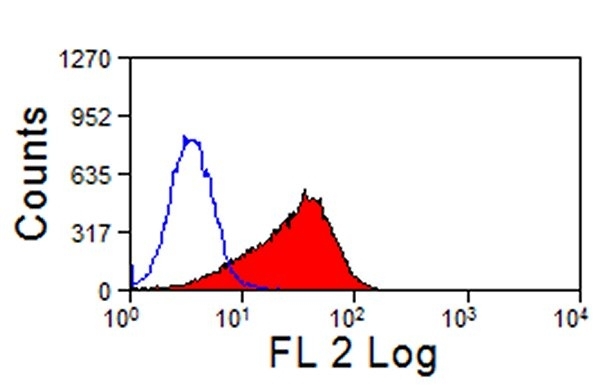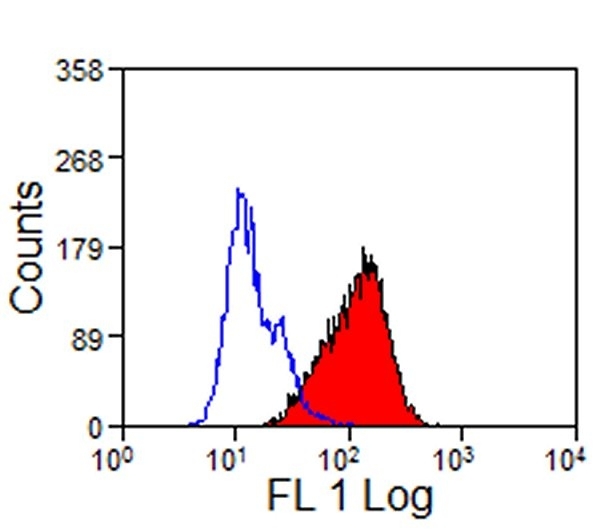TIM-3 antibody | RMT3-23




Rat anti Mouse TIM-3
- Product Type
- Monoclonal Antibody
- Clone
- RMT3-23
- Isotype
- IgG2a
- Specificity
- TIM-3
| Rat anti Mouse Tim-3 antibody, clone RMT3-23 recognizes mouse T-cell immunoglobulin mucin 3, a transmembrane glycoprotein and member of the immunoglobulin superfamily, preferentially expressed by differentiated CD4+ Th1 cells and CD8+ Tc1 (cytotoxic) cells, but not by CD4+ Th2 cells or CD8+ Tc2 cells. Tim-3 acts as a negative regulator of Th1-mediated inflammatory diseases including GVHD, type I diabetes, and EAE (experimental autoimmune encephamyelitis), promotes immunological tolerance, and is a receptor for galectin-9, shown to induce cell death of Th1 cells in vitro. Tim-3 is also involved in the regulation of macrophage activation, acts as a phagocytic receptor, and has been shown to recognize apoptotic cells via the IgV domain. Rat anti Mouse Tim-3 antibody, clone RMT3-23 significantly inhibits the efficient phagocytosis of apoptotic cells by peritoneal exudate Mac1+ cells ( Nakayama et al. 2009). |
- Target Species
- Mouse
- Product Form
- Purified IgG - liquid
- Preparation
- Purified IgG prepared by affinity chromatography on Protein G from tissue culture supernatant
- Buffer Solution
- Phosphate buffered saline
- Preservative Stabilisers
- 0.09% Sodium Azide (NaN3)
- Carrier Free
- Yes
- Immunogen
- Tim-3-Ig, consisting of amino acids 1-191 of mouse Tim-3, coupled with the Fc portion of mouse IgG2a.
- Approx. Protein Concentrations
- IgG concentration 1 mg/ml
- Fusion Partners
- Lymph node cells from immunized SD rats were fused with cells of the P3U1 myeloma cell line.
- Regulatory
- For research purposes only
- Guarantee
- 12 months from date of despatch
Avoid repeated freezing and thawing as this may denature the antibody. Storage in frost-free freezers is not recommended.
| Application Name | Verified | Min Dilution | Max Dilution |
|---|---|---|---|
| Flow Cytometry | 1/25 | 1/200 | |
| Immunofluorescence | |||
| Immunohistology - Frozen | |||
| Immunohistology - Paraffin |
- Flow Cytometry
- Use 10ul of the suggested working dilution to label 106 cells in 100ul.
| Description | Product Code | Applications | Pack Size | List Price | Your Price | Quantity | |
|---|---|---|---|---|---|---|---|
| Rat IgG2a Negative Control | MCA1212 | E F | 1 ml |
|
Log in | ||
| List Price | Your Price | ||||||
|
|
Log in | ||||||
| Description | Rat IgG2a Negative Control | ||||||
| Description | Product Code | Applications | Pack Size | List Price | Your Price | Quantity | |
|---|---|---|---|---|---|---|---|
| Antigen Retrieval Buffer, pH8.0 | BUF025A | P | 500 ml | Log in | |||
| List Price | Your Price | ||||||
| Log in | |||||||
| Description | Antigen Retrieval Buffer, pH8.0 | ||||||
References for TIM-3 antibody
-
Oikawa, T. et al. (2006) Preferential involvement of Tim-3 in the regulation of hepatic CD8+ T cells in murine acute graft-versus-host disease.
J Immunol. 177 (7): 4281-7. -
Nakayama, M. et al. (2009) Tim-3 mediates phagocytosis of apoptotic cells and cross-presentation.
Blood. 113 (16): 3821-30.
Further Reading
-
Freeman, G.J. et al. (2010) TIM genes: a family of cell surface phosphatidylserine receptors that regulate innate and adaptive immunity.
Immunol Rev. 235 (1): 172-89.
- Synonyms
- T Cell Immunoglobulin Mucin 3
- UniProt
- Q8VIM0
- Entrez Gene
- Havcr2
- GO Terms
- GO:0016021 integral to membrane
MCA5790GA
If you cannot find the batch/lot you are looking for please contact our technical support team for assistance.
Please Note: All Products are "FOR RESEARCH PURPOSES ONLY"
View all Anti-Mouse ProductsAlways be the first to know.
When we launch new products and resources to help you achieve more in the lab.
Yes, sign me up


